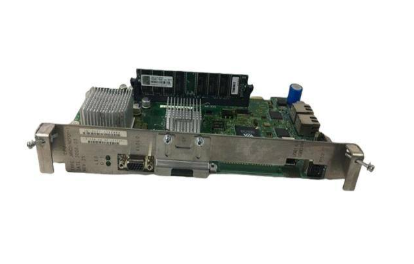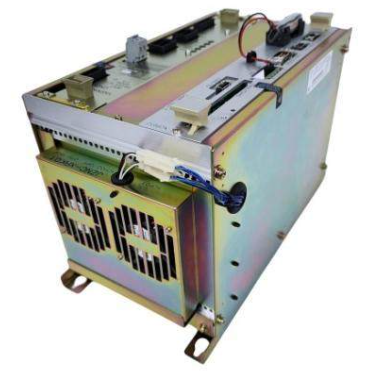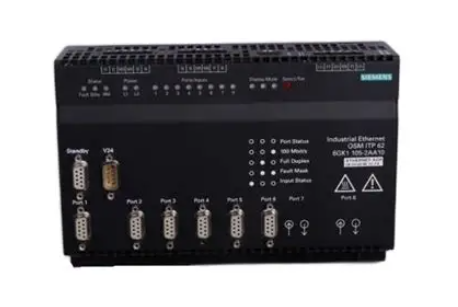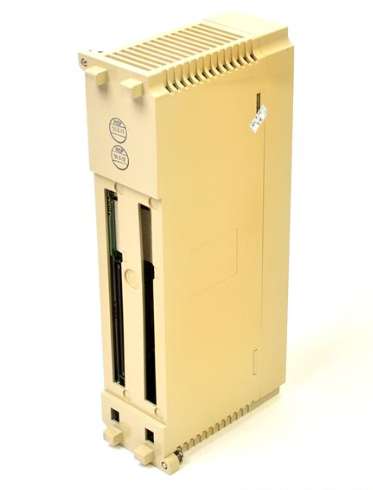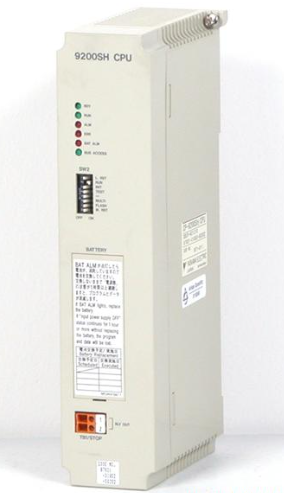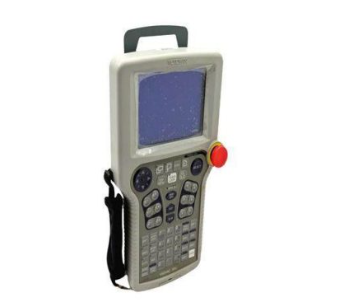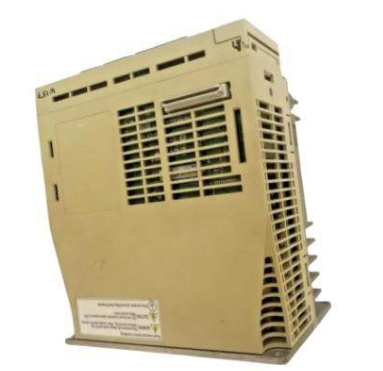AB 1771-IFE A/B/C Analog Input Module
AB 1771-IFE A/B/C Analog Input Module
Preparation before installation:
Static electricity protection: the module is sensitive to static electricity, touch grounded objects,
wear a wrist strap when operating, avoid touching the backplane connectors and internal circuit components,
and place it in a static shielding box when not in use.
Directive Compliance: CE marked, compliant with EU EMC and Low Voltage Directives, meets relevant standards.
Compatibility: Can be used in 1771 I/O chassis, but not with 1771-AL PLC - 2/20 or 2/30 local adapters.
Power Calculation: Module draws 500mA from the 1771 I/O power supply and needs to calculate the total power in the chassis to prevent overloading.
Module Positioning: Can be installed in slots other than the leftmost slot (reserved for PC processor or adapter modules)
with care to avoid electromagnetic interference.
Installation Procedure:
Jumper Setting: If replacing an A or B series module, set the A/B analogue jumper from POS G to POS E; select the input type (voltage or current)
by configuring the jumper, but all inputs must be either single-ended or differential and cannot be mixed .
Module Installation: Smoothly insert the module into the chassis rails after power is removed, secure the chassis latch and locking lever,
and connect the 1771-WG wiring arm.
Wiring Connection: Connect the I/O devices, note the difference in connection between single-ended and differential inputs,
avoid mixing 2-wire and 4-wire transmitter inputs, the sensor cable should be shielded and grounded.
Grounding operation: The foil shield and drain wire of the shielded cable are grounded at one end only,
connected to the chassis mounting bolts, and insulated at the other end.
Module Configuration: A wide range of parameters can be configured via the Block Transfer Write command,
such as 7 input voltage or current ranges, data format (BCD or binary), real-time sampling (100 ms - 3.1 sec selectable),
digital filtering (0.00 BCD - 0.99 BCD),** scaling (max range ±9999 BCD)**, etc.
The default configuration is 1 - 5V dvd. Default configurations are 1 - 5V dc or 4 - 20mA, BCD format, no real-time sampling, etc.
Troubleshooting: There are green RUN and red FAULT indicators on the front panel of the module,
and faults can be judged by the status of the indicators and the status bits in the BTR file.
If RUN blinks and FAULT is off, it means waiting for configuration; if RUN is off and FAULT is on, it may be a hardware failure.
Module specification:
| Description | Values
|---|---| Inputs per module | 16
| Inputs per module | 16 single-ended; 8 differential low | Module Position | 1771
| Input Voltage Range |+1 to +5V dc, 0 to +5V dc, etc. | Input Current Range |+1 to +5V dc, 0 to +5V dc, etc.
| Input Current Range +1 to +5V dc, 0 to +5V dc, etc. | Input Voltage Range +1 to +5V dc, 0 to +5V dc, etc.
Input Current Range |+4 to +20mA, 0 to +20mA, etc. | Resolution | 12-bit binary (12-bit plus sign bit for bipolar range)
Accuracy | 0.1% of full scale range @ 25°C| | Linearity | ±1% of full scale range @ 25°C
| Linearity |±1 LSB| | Repeatability |±1 LSB| | Repetition
| Repeatability |±1 LSB| | Isolation Voltage
| Isolation Voltage | Meets or exceeds UL Standard 508 and CSA Standard C22.2 No. 142.
| Input Overvoltage Protection | Voltage Mode 200V, Current Mode 8V| | Input Overcurrent Protection | Voltage Mode 200V, Current Mode 8V
Input Overcurrent Protection |30mA| Common Mode Voltage |±0.5V, Current Mode 8V
Input Overcurrent Protection |30mA| Common Mode Voltage |±14.25V
| Input Impedance | Voltage range >10 megohms; Current range 250 ohms | Common Mode Rejection Ratio
| Common Mode Rejection Ratio | 80 db, dc - 120Hz | Common Mode Voltage | ±14.25V | Input Impedance
Current Requirement | 500mA @ +5V (I/O chassis backplane)| | Power Consumption | 2.5mA @ +5V (I/O chassis backplane)
Power Consumption | 2.5 Watts (Max) | Thermal Dissipation | 8.5 Watts (Max)
| Thermal Dissipation | 8.52 BTU/hr (max)| | Power Consumption | 2.5 Watts (max)
| Unscaled Output | Polarity Range 0000 to +4095; Bipolar Range - 4095 to +4095|
| Engineering Units Output | ±9999 (optional scaling)| | Internal Scan Rate | 8
| Internal Scan Rate | 8-way differential unfiltered 13.7ms; 16-way single-ended unfiltered 27.4ms | Environmental Conditions | Operating Temperature
| Environmental Conditions | Operating Temperature 0 - 60 °C 0 - 60 ∘Operating Temperature 0 - 60Operating Temperature 0 - 60 ∘ C
Operating Temperature 0 - 60 ∘ C; Storage Temperature - 40 - 85∘C
Relative humidity 5 - 95% (non-condensing) | Conductor gauge | 14 gauge (non-condensing)
| Conductor Gauge | 14 gauge (2mm 2mm Stranded Wire (Max)3/64inch (1.2mm) insulation (maximum); Category 2
| Keyed Positions | Between 10 - 12, 24 - 26
| Keyed Positions | Between 10 - 12, 24 - 26 | Wiring Arms
| Junction Arm | Catalog Number 1771-WG
| Junction Arm Screw Torque | 7 - 9 in-lb | Keyed Positions | 10 - 12, 24 - 26
| Agency Approvals | Class 1 Div 2 Hazardous; CE marking (applies to directives)| | Series Differences: A, B, and C
Series Differences: The A, B, and C series modules differ in indicator lights, input data handling, default scaling, block transfer length,
configuration plugs, compatibility, calibration procedures, and agency approvals.
For example, the A and B series modules have a green run indicator that is always on at power-up,
while the C series modules blink until they are configured to receive BTW;
the A and B series modules input data is clamped at the range endpoints,
while the C series modules can return data both above and below the range endpoints.
Key Issues:
How are 1771-IFE A/B/C modules installed to prevent static discharge?
Answer: Discharge static electricity by touching a grounded object; wear an approved wrist strap grounding device;
do not touch the backplane connectors, pins, and internal circuitry components of the module;
use an antistatic workbench if available; and place the module in a static-shielded box when not in use.
How are the module's input ranges and data formats configured?
Answer: Input ranges are configured via Word 1 and Word 2 of the Block Transfer Write command, with a 2-bit setting
for each channel and a choice of 7 voltage or current ranges; data formats are set via Bits 09 - 10 of Word 3, with a choice of BCD,
Binary Complement, or Symbol Amplitude Binary formats, typically BCD for PLC-2 and Binary Complement for PLC-3 and PLC-5.
What is the difference between Series A, B, and C modules in terms of indicator display?
Answer: Series A and B modules have a green run LED that comes on and stays on at power up and provides only 3 digits of diagnostic information;
Series C modules have a green run LED that blinks at power up and stays on until a configuration BTW is received and provides 6 digits
of diagnostic information representing 6 possible faults.
- EMERSON
- Honeywell
- CTI
- Rolls-Royce
- General Electric
- Woodward
- Yaskawa
- xYCOM
- Motorola
- Siemens
- Rockwell
- ABB
- B&R
- HIMA
- Construction site
- electricity
- Automobile market
- PLC
- DCS
- Motor drivers
- VSD
- Implications
- cement
- CO2
- CEM
- methane
- Artificial intelligence
- Titanic
- Solar energy
- Hydrogen fuel cell
- Hydrogen and fuel cells
- Hydrogen and oxygen fuel cells
- tyre
- Chemical fiber
- dynamo
- corpuscle
- Pulp and paper
- printing
- fossil
- FANUC
- Food and beverage
- Life science
- Sewage treatment
- Personal care
- electricity
- boats
- infrastructure
- Automobile industry
- metallurgy
- Nuclear power generation
- Geothermal power generation
- Water and wastewater
- Infrastructure construction
- Mine hazard
- steel
- papermaking
- Natural gas industry
- Infrastructure construction
- Power and energy
- Rubber and plastic
- Renewable energy
- pharmacy
- mining
- Plastic industry
- Schneider
- Kongsberg
- NI
- Wind energy
- International petroleum
- International new energy network
- gas
- WATLOW
- ProSoft
- SEW
- wind
- ADVANCED
- Reliance
- YOKOGAWA
- TRICONEX
- FOXBORO
- METSO
- MAN
- Advantest
- ADVANCED
- ALSTOM
- Control Wave
- AB
- AMAT
- STUDER
- KONGSBERG
- MOTOROLA
- DANAHER MOTION
- Bently
- Galil
- EATON
- MOLEX
- Triconex
- DEIF
- B&W
- ZYGO
- Aerotech
- DANFOSS
- KOLLMORGEN
- Beijer
- Endress+Hauser
- MOOG
- KB
- Moxa
- Rexroth
- YAMAHA
- Johnson
- Westinghouse
- WAGO
- TOSHIBA
- TEKTRONIX
- BENDER
- BMCM
- SMC


Email:wang@kongjiangauto.com

